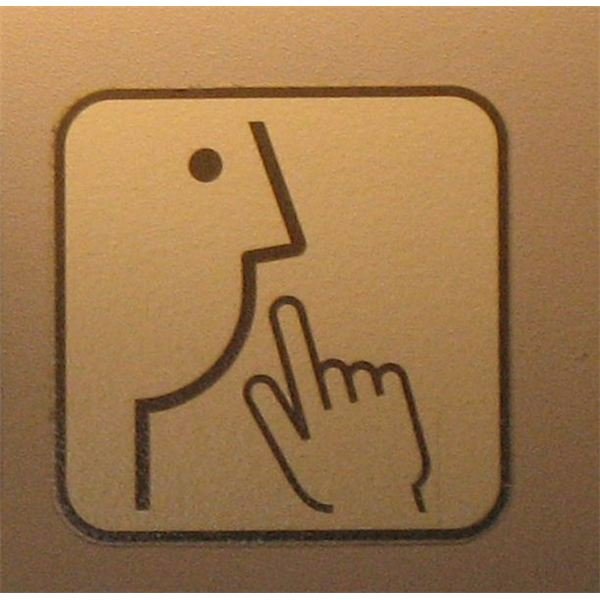Understanding the Communication Styles of Different Generations
What Did They Say?
In researching communication styles for different generations, I was fascinated to find out that anyone can receive an online certificate in Generational Communication and Management from a company called LERN. A decade or so ago, this was not one certificate you might earn and be proud to display on your wall. In today’s workforce, it’s almost a must.
Communicating to people of all age groups is now a tool to master especially when you consider the four basic groups; Traditionalist, Baby Boomers, Gen Xers and the Millennials, also known as Gen Y.
There’s a difference between, “Sir I made a mistake,” “Totally my fault,” “My bad,” and “Didn’t you read my Tweet?” If you don’t understand how to communicate with your all-age workforce, you’ll find yourself lost—and fast.
Each of these age groups, though some of us find ourselves in more than one group, are markedly different including how they communicate with you and the world around them. Instead of attempting to communicate your way or the highway, consider how the communication styles of different generations can be used to create a better work environment all around.
Understanding the Generation Gap
Before we tackle how to better communicate no matter what the generation, here’s a quick breakdown of each generation group:
- Traditionalists – This group comprises approximately 15% of the workforce today and includes everyone born before 1945. Traditionalists respect authority and expect respect for a job well done. They are hard workers and stick to instructions given. While some of this generation may not be happy with all aspects of their jobs, they tend to follow the chain of command, don’t complain, are quiet, and realize a good paycheck means hard work. Traditionalists will usually stay with one company most of their career.
- Baby Boomers – Born between 1946 and 1964, the Baby Boomer generation makes up approximately 50% of today’s workforce. Think of this generation as those who dropped out and then dropped back in. While the 1970s were fun, this group did learn to respect authority and often hold higher management positions. They offer more ideas than Traditionalists and expect to lead, not follow.
- Gen Xers – This group makes up about 30% of the workforce and was born between 1965 and 1982. They know and understand technology and want to use it. Gen Xers may have lots of career interests and paths. They demand individuality and like multi-tasking. Gen Xers often tend to think in the grass is greener mode and work/life balance is important.
- Millennials or Gen Y – Born between 1983 and 2000, Millennials make up only a small percentage of the current workforce but is on the rise every year. Boring or menial tasks are not for the millennial worker. They not only expect technology in every form, but demand it. They would be lost without the Internet or gadgets that do everything from email to finding directions to where to eat out at night. A dress code is not especially important to the Gen Y group and they tend to seek out jobs where their creativity is most important, noticed, and rewarded.
The communications styles of different generations are vast. A Traditionalist might call a CD a record and a Millennial has never seen a record, yet alone a record player. Baby Boomers may respect one’s freedom of expression but don’t quite get the “it’s all about me” of the Gen Xers. If you’re a manager and must communicate with all types of people in varying generations, how do you make it flow smoothly? Here are some great ideas for each type of generation.
Please click on Page 2 to find out which communication style and tools you’ll need for each age group.
The Silence of the Traditionalist

Think of Traditionalists as survivors of the both world wars with little technical knowledge but with much work ethic and personal values. To communicate with this generation you may have to prod a little as they tend to not offer opinions without being asked. These hard workers are trainable and prefer written instructions to aid them. They do enjoy learning as they go and don’t like to waste too much time chatting around the water cooler. If a Traditionalist tells you a job will be done at a certain time, be assured it will, unless others keep changing the game. Be sure that this generation prefers a good face-to-face conversation instead of an email or communicating through a third party.
The workers of this generation may be the one to write your actual communication plan as they are detailed oriented. Any change in a process may have to be thoroughly explained in order for this age group to accept it. They are masters of memory and can be the go-to guys if clarification is needed, risks need to be identified and handled, and have great customer communication skills. They can often keep a stressed workforce calm in rough situations. Finally, if something really needs to be investigated, give the job to a Traditionalist.
The Cool Baby Boomer
Perhaps the Baby Boomers are the generation most acceptable to change. Life started off great for this age group and they were allowed to explore their identities. This group did experience the rise and fall of many companies and have changed jobs due to force or circumstances, not because they wanted change. Baby Boomers have ample knowledge of technology but most still prefer a phone call than an email. This group reads body language well and while they do like a show-me atmosphere, they also like written back up plans. Think of Baby Boomers as the memo generation.
Baby Boomers are fond of the saying, “We’ve always done it this way,” but they will accept a challenge if offered. They are great readers, thinkers and analyzers. Baby Boomers are great at leading with a clear head and don’t become overly frustrated in tough spots. Even though many of them haven’t done it “the old fashioned way,” they still believe that is the best way and will argue a cause to the end. Because this group became the first work-aholics, they tend to expect more from co-workers, especially in the form of follow up, documenting, and organizing. Baby Boomers are great team workers.
The Balancing Act of Gen Xers
Gen Xers aren’t afraid of technology and love new gadgets, even if it takes a little longer than a Millennial to understand how it all works. Communication is often short and to the point, and email is their preferred method. Gen Xers strive for feedback from supervisors and offer feedback in return. They can also be offended if not kept informed and feel left out. Each of their days will include communication time with family or friends to ensure they are handling the work/life balance they desire.
If short meetings are essential, Gen Exers should lead them. Time is money and they enjoy working in short bursts and at flexible times. If allowed, they prefer to work, document, inform and understand their tasks as well as others. Teamwork ability may be slow but can be enhanced through matched skill sets. Visual assignments are better than long document reading and they don’t put much emphasis on pats on the back as much as cash in the pocket. With Gen Xers, set goals are better achieved by incentives.
The LOL Millennials

Millennials want to jump right in and see, feel, and touch every bit of technology placed before them. They will use short, quick emails as well as texting and mobile phone apps to communicate and are often shocked when others don’t. They expect work to be fun and also seek flexible work atmospheres. They work well in any group including diverse groups. Ways to speed up a process is their goal and they look for jobs that will pay more, meaning they often have many career paths.
As far as communication, keep it simple and let the Millennial go at it so to speak. They enjoy a creative workplace and like to think outside the box. If a new way is needed, they are most likely to find the correct resource. Laughter is essential in their communication day and they expect to give as much as receive as far as job performance. Stern talking or talking down to is not accepted well by this age group as they expect everyone to be on the same level. As with the Gen Xers, visuals, albeit even shorter visuals, are more effective than document reading. You’ll never get a memo from a Millennial and innovation should be encouraged.
Please click on Page 3 to learn real life situations on how to communicate effectively and use each generational style to your advantage.
Mixing the Blend Effectively

For readers familiar with me comparing various situations to my auto dealership employees, I do indeed employ all four of these generations and here, I offer a good way to blend the mix effectively. As a Baby Boomer myself, I have found the following works well when blending communication styles of different generations:
- The Traditionalist – Here I have Ray, a sales associate who does not want to learn to use the computer and instead prefers old fashioned sales ups and log tracking and gets the most out of every one of the automaker’s telecasts. His customer interaction is bar none. Because of these qualities, I allow Ray to design how customer follow-ups will be handled (even if he doesn’t actually use a computer system himself to do it). He is the go-to guy on new product and information provided by the manufacturer because he takes notes and is detailed in those notes. New sales associates often gain much under his wing on how to treat the customer right. He is good at explaining to younger age groups what a hard day’s work really means.
- The Baby Boomer – Here I have Raul, my General Manager. It’s best to allow Raul to have total rule as far as communicating to his flock. I allow him to decide which is the best communication tool, even if that tool means utilizing more than one so everyone “gets it.” Instead of relying on technology advancements, Raul asks for and expects assistance from Gen Xers and Millennials on the best way to utilize our systems. Because of the coolness of the Baby Boomer, Raul is good at conflict and seeing both sides, so he is my employee moderator so to speak. Although he may not have the “long story” to delight customers as Raul does, he does offer a calming effect so I know he is trusted by both employees and customers.
- The Gen Xer – Yvonne is my Gen Xer and my personal assistant. Because of her technology knowledge, I allowed her to set up interoffice email communication as well as training. She is responsible for our website and office design. Yvonne is best at her work when I offer a cash goal such as, “If we get this system in place by month end, that’s more money for you.” Because Gen Exers are great at multi-tasking, I know if I ask her to communicate my instructions while completing other tasks, everyone will know where I stand on a certain issue by day end.
- The Millennial – Here I have Bob who LOLs and OMGs all day long. He is the first one to make everyone laugh and is my Internet Sales guy. Because he can think outside of the box, he makes our Internet sales creative and offers simple explanations through the technology at hand. Because Bob works well with everyone, I allow him to offer suggestions and analyze situations, which he is able to do quickly.
- The Facilitator – Wait a minute, did I talk about facilitators? In essence, any business owner or manager needs to be this type of person to effectively blend all of these generations. That’s basically what I do and other companies across the globe are finding new and innovative ways to do this. My favorite is Lucent Technologies that offers what they call the IdeaVerse Center. In their IdeaVerse Center they offer training tools by generation whether it is in a technology format, book or document format or visual format. Most likely, if you become a great facilitator, you will be able to master the communication styles of different generations with a little practice.
Resources
LERN (7/3/2010) https://www.managing-generations.com/
University of Hawaii (7/3/2010) https://honolulu.hawaii.edu/intranet/committees/FacDevCom/guidebk/teachtip/intergencomm.htm
Image Credits:
- Left Human Ear: https://commons.wikimedia.org/wiki/File:Ear.jpg
- Ruhe (Be Quiet): https://commons.wikimedia.org/wiki/File:Ruhe.jpg
- LOL WUT IRL: https://commons.wikimedia.org/wiki/File:LOL_WUT_IRL.jpg
- Mixer: https://commons.wikimedia.org/wiki/File:Mixer.jpg
